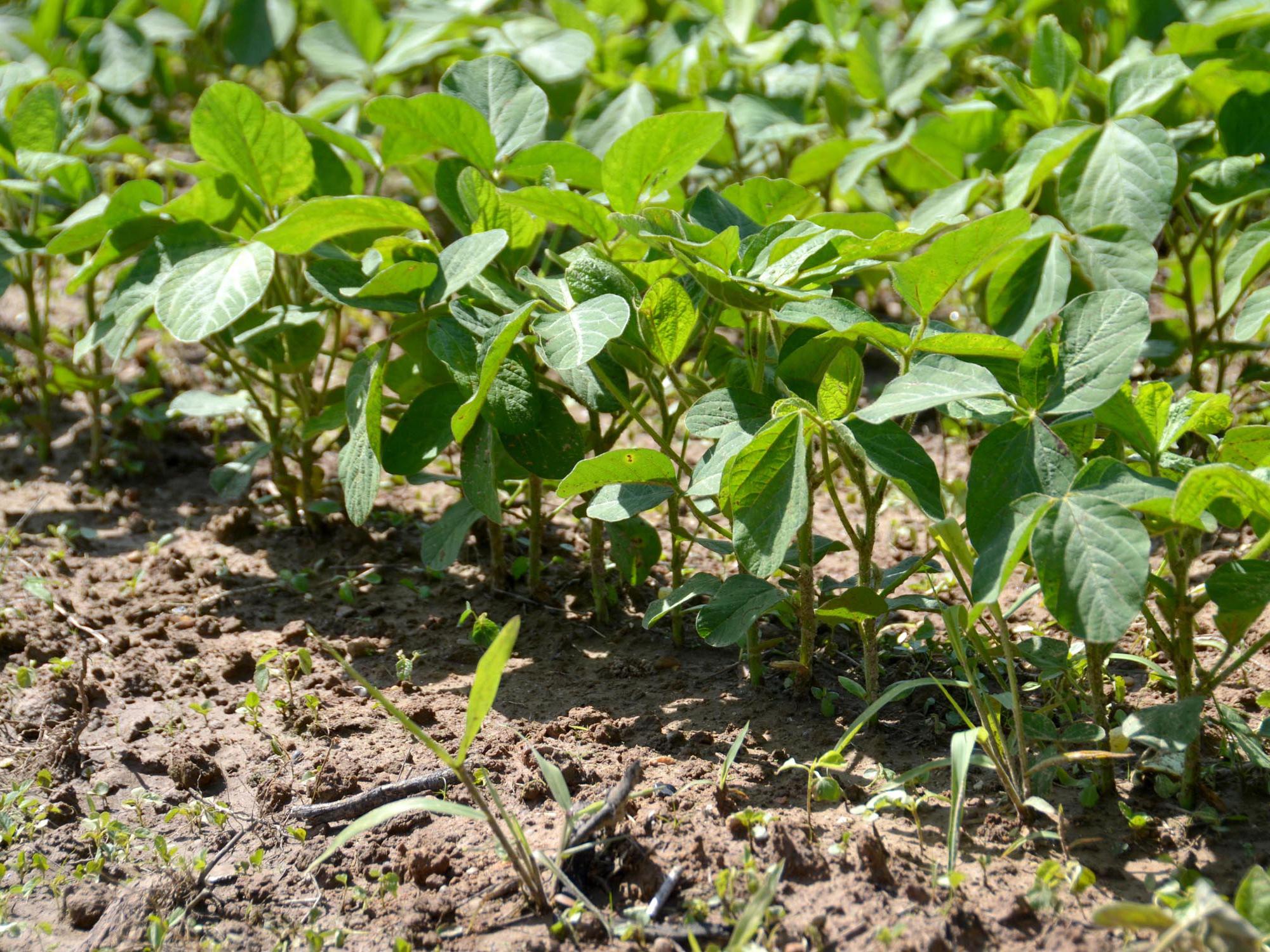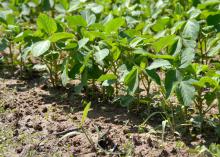Information Possibly Outdated
The information presented on this page was originally released on June 13, 2014. It may not be outdated, but please search our site for more current information. If you plan to quote or reference this information in a publication, please check with the Extension specialist or author before proceeding.
Wet weather delays soybean growth
JACKSON -- Although most of the state’s soybeans have been planted, Mississippi famers will have to deal with the consequences of this spring’s wet weather for the rest of the growing season.
“We never want to wish away a rain in June,” said Trent Irby, Mississippi State University Extension Service soybean specialist. “But growers are and will continue to experience some issues because of the excess rain we’ve had.”
Irby estimates the state’s largest row crop is 90 percent planted, and some fields are already in the reproductive stage.
“We’ve had a large amount of rain during the last couple of weeks,” Irby said. “Some areas of the state have experienced flash flooding. As a result, we are going to be behind on weed control and will likely have to replant some acres.”
Mississippi growers are expected to plant 2.15 million acres of soybeans this year, according to the U.S. Department of Agriculture’s Prospective Plantings Report. Last year, growers planted just over 2 million acres.
“We are on target to meet that estimate, and we may even exceed it a little,” Irby said. “We could have as many as 2.25 million acres, depending on the weather over the coming weeks.”
A decrease in corn prices led many farmers to choose other crops when making planting decisions earlier this year. Extension agricultural economist Brian Williams said tight supplies of stored soybeans are pushing prices up for the old crop relative to the new crop. However, the large amount of soybean acreage has November futures prices trading at $12.29, more than $2 lower than this time last year.
“As of June 9, stored soybeans were selling for $14.87 per bushel in Greenville and $14.65 per bushel in Belzoni,” Williams said. “Not many soybeans are left in storage, which will support prices through the summer. Once harvest begins in September, supplies should increase, unless a drought or some other factor threatens yield.”
Jason Bond, an Extension and Mississippi Agricultural and Forestry Experiment Station weed scientist, said the weather is the biggest problem soybean growers face right now. Soggy fields delayed herbicide applications by two to three weeks in some areas, which could mean a tougher battle against some herbicide-resistant weeds, such as Palmer amaranth.
“Once Palmer amaranth reaches four to five inches in height, it is almost impossible to control,” Bond said. “That just precipitates the problem next year. The weeds grow to maturity, put on seed, and we have more of it next year.”
When fields dry out, farmers should be able to manage other non-herbicide-resistant weeds with one additional herbicide application, depending on the species and density of the weed, Bond said.
Bobby Golden, Mississippi Agricultural and Forestry Experiment Station agronomist, said growers should watch for signs of nutrient deficiencies, which are increased by the wet conditions and cool weather. Specialists have identified sulfur and manganese deficiencies in both the north and south Delta.
“Delayed nodulation and slow plant growth are signs that water-logged soils are hampering nutrient uptake, but proper fertilization and better weather will correct the problem,” Golden said. “If farmers think they have nutrient-related issues, they need to let us know so we can accurately diagnose the problem and help get their crop back on track. Many nutrient deficiencies look very similar to herbicide injury, and it can be difficult to distinguish between the two.”
Golden said he expects to see soybeans catch up as nutrient deficiencies are treated, the temperature increases and fields dry out.
While farmers are not experiencing any major insect or disease issues right now, MSU specialists said they should remain watchful.
“Things are fairly quiet on the disease front right now. However, the most notable disease observed at this point has been Septoria brown spot in the lower canopy,” said Tom Allen, Extension plant pathologist and Mississippi Agricultural and Forestry Experiment Station research professor. “Even though the disease may look bad, a fungicide application is not suggested.”
Researchers recently discovered the fungus that causes frogeye leaf spot is no longer sensitive to stand-alone strobilurin fungicides in 44 counties. These fungicides are the type row crop farmers use most often, Allen said.
“Growers should be on the lookout for this fungus,” he said. “The earlier we catch it, the better chance we have at reducing yield loss associated with the disease, especially in frogeye leaf spot-susceptible soybean varieties.”
Armyworms and stinkbugs arrived early in some fields this year, said Angus Catchot, Extension entomology specialist.
“Armyworms prefer grass but can cause a lot of defoliation quickly if nearby grass has been killed off with an herbicide,” Catchot said. “Anyone who is planning to apply herbicide should scout the field well first. If armyworms are present, they should add a pyrethroid to their herbicide.”
Stinkbugs have shown up in south Delta fields where early soybeans have just begun to flower, Catchot said.
“The number of stinkbugs is not really all that high,” he said. “So we are going to ride it out and wait to see how things develop.”






